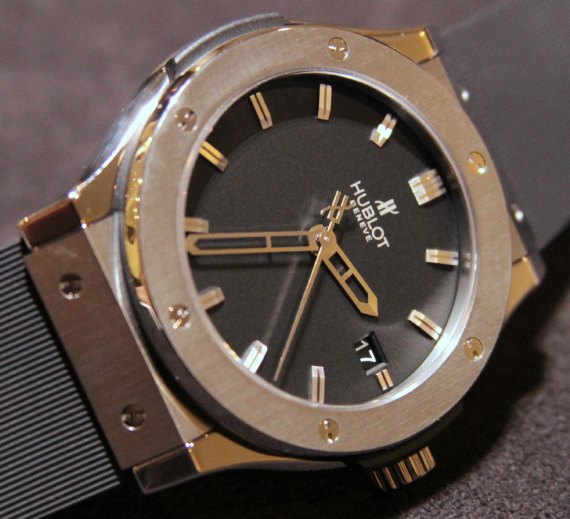
How do you create a classic? The statement in and of itself shouldn’t make sense as classic things develop over long periods of time. Such “instant classics” are merely good designs that appeal to many people. What I am talking about is literally making a bona fide classic in the time it takes most people to simply develop a product. I can’t say I fully understand how, but Jean-Claude Biver at Hublot has turned the Big Bang watch line into a classic over the period of just a few years – but he did.


In 2004 almost nobody had heard of Hublot. Suddenly a short time later we see the birth of a phenomenon. Literally the ‘big bang’ of the Big Bang. Now, about 5 years later after the product launched, you couldn’t count how many Big Bang models there have on the fingers of all the people at a crowded party. What each new watch had in common was a certain pure sense of connection to each other. They each had the same distinct DNA, and the brand forced the core design in the realm of being a classic.
At the 2010 Baselworld show, Hublot unveils the Hublot Classic Fusion. A classic looking watch based upon the Big Bang design that itself is a modern looking watch. The only way that was possible, was by making the Hublot Big Bang itself a classic. Again, the irony is that the Big Bang watch itself is modern and aggressive. Anything but a classic. So Hublot was able to make a classic from a non-classic.
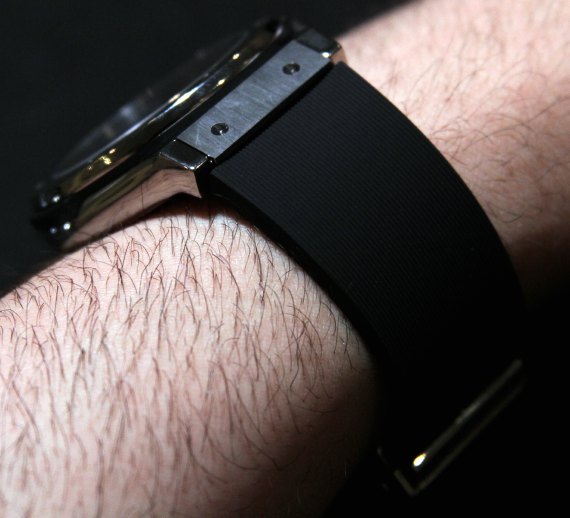
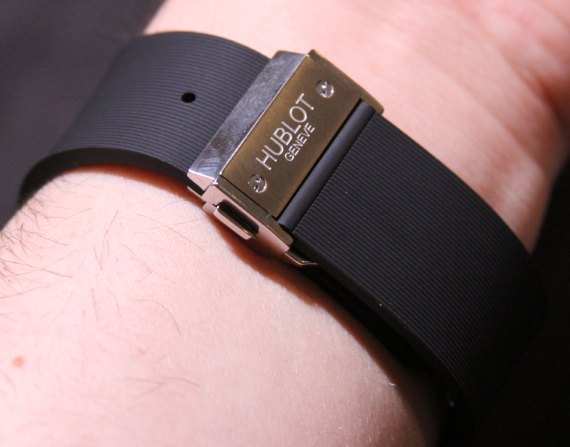
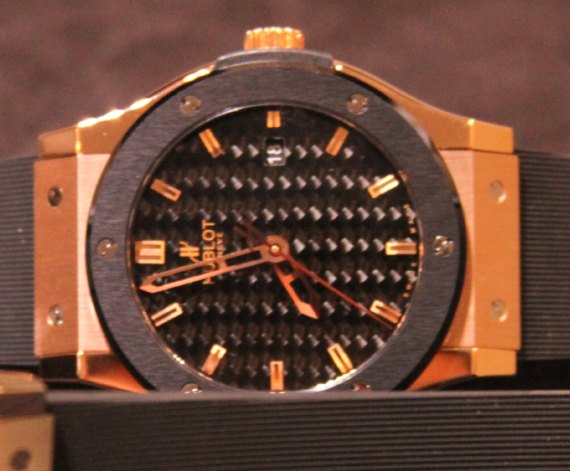
Classic Fusion works. Hublot takes the core Big Bang look and simplifies it. Think of it as a stripped down Big Bang King – the non-chronograph diver version of the Big Bang. The Classic Fusion has a much thinner profile and simplified dial. What you have is the classic porthole design of the case, and the strong hands and hour markers that made the Big Bang so famous. The cases come in either steel or red gold, and the bezel is in ceramic with a brushed tip and polished sides on the carbon fiber dial version, while the matte dial versions have matching gold or steel bezels. Rubber straps with thin vertical lines remind us of the first Big Bang watches that came out just a few years ago – but seems ages old given the plethora of Big Bang models to precede it.
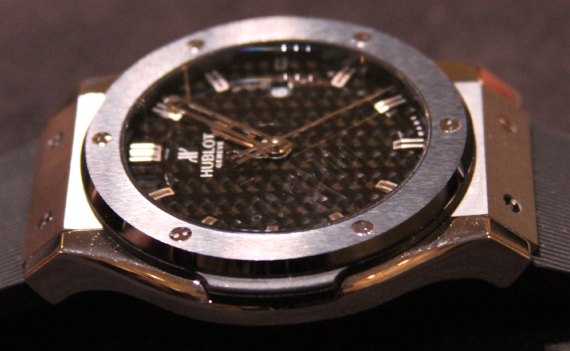
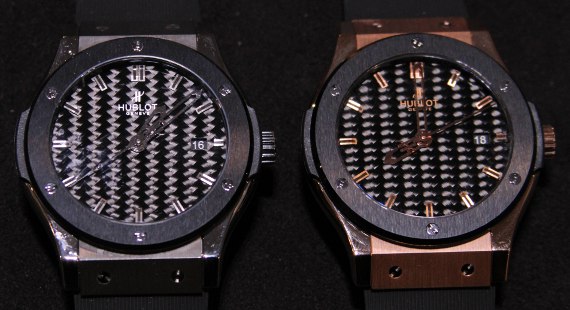
The Classic Fusion comes in two sizes. I believe the cases are 44mm and 42mm. In the images above, the matte dials versions are larger in the steel case, and a bit smaller in the gold case. In addition to the plainer matte dials, Hublot also offers a sportier carbon fiber dial option. I anticipate many more versions to come in the future. Perhaps even with classic complications for such thinner pieces such as calendars and moon phase indicators – all with the Hublot twist.
Being quite thin, the watches are very comfortable – and easy to adjust. High-end watches with rubber straps these days have a system where the excess rubber strap tuck in where your wrist is, rather than flops around on the outside. I didn’t get pricing information or specific availability, but expect the Classic Fusion watches out soon. Oh, and if you are wondering about the “Fusion” part of the name – well Mr. Biver considers the original Big Bang watches to be a “fusion” of materials. That for him is the point of the collection. So here, the idea is to return to the classic feeling of this “Fusion” feeling.
